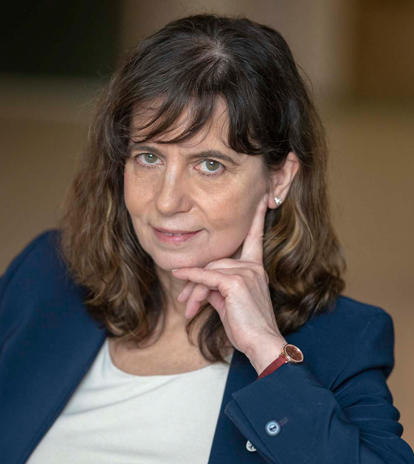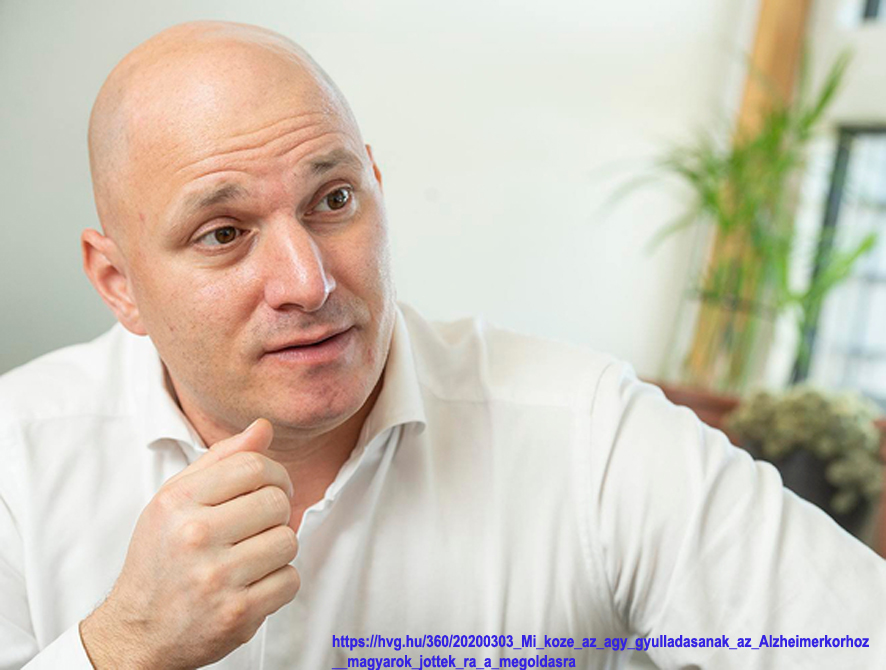Our academics old and new
Even if you remain a researcher, your career can take many different paths. One, but by no means the only, measure of success is the attainment of academic degrees, the highest of which is the non-tenure-track academic degree.
Before becoming the president of the MTA, Professor Vizi the third director of the IEM, headed the largest group of scientists at the institute. At one of his group meetings, after asking around about who had done what recently, he remarked that anyone who worked as a researcher in a research institute had every opportunity to achieve the highest scientific degree that could be applied for, the title of Doctor of Science. He intended this as an encouragement to many of the young people in his group. Not only is it true that more than one of the young people at that time had already achieved this title, but also that some had gone beyond it. This is Beáta Sperlágh, who is now the Director of HUN-REN IEM and, since 7 May 2025, officially a full member of the HAS.
 However, our congratulations and recognition also go to László Acsády, head of the Thalamus research group, who was also elected as a corresponding member six years ago - two HAS election periods ago - and has now gone from corresponding member to full member of the MTA!
However, our congratulations and recognition also go to László Acsády, head of the Thalamus research group, who was also elected as a corresponding member six years ago - two HAS election periods ago - and has now gone from corresponding member to full member of the MTA!
Our institute employs about 140 researchers, so it was not an everyday occurrence that six of them - Szilveszter E. Vizi, Gábor Makara, Tamás Freund, Zoltán Nusser, László Acsády and Beáta Sperlágh - are academics! Today the ratio is even better, because on 7 May 2025, Ádám Dénes, head of the Neuroimmunology group, was elected a corresponding member of the HAS! (You could say that one in twenty researchers at our institute is an academic.)
Some people were seriously surprised by Adam's election. Because, who ever heard of someone becoming a doctor of the MTA in 2024 and an academic in a year's time? Apparently, time is not only relative according to Einstein, but our 200-year-old academy does not want to stick to outdated convections, either. It should also be mentioned that the Biology Department is not renowned for accepting anyone as a member on the first word/nomination. This fact alone underlines the importance - and acceptance - of Adam's research and results.
Along with our congratulations, we have enclosed a few questions.
- So, you have not been in a hurry to apply for the MTA doctorate. True, Tamás Freund was younger than you, was only 39 years when he became an academician, but that was 6 years after his MTA doctorate!
- The election came as a surprise to me too. I was very honoured to be nominated by Gábor Tamás, Zoltán Nusser, László Acsády, Mária Deli and Eörs Szathmáry, and I thank them for their confidence. For me, it is a great value in itself that our work is recognised in this way by the Hungarian scientific community, as what we do is at the interface of neuroscience and immunology, not to mention the biomedical aspects of our research.
- Why is it a problem that your research does not fall into one of the "main trends"?
- Interdisciplinary research of this kind is often "orphaned" because it is difficult to fit in with cutting-edge research in particular academic schools, which are supported by the big players in the field if they deem them worthy. At our institute, there are several internationally recognised lines of research in the field of classical neurosciences, and it is a great pleasure to be able to contribute to this heritage by studying glial cells, neuroimmune processes and inflammatory processes in neurodegenerative diseases.
- Microglia research has become a veritable 'gold mine' for you - but working in a gold mine is dangerous in more ways than one. What are the main hazards?
 - The recognition of a research topic often does not follow its objective importance, because the impact of some discoveries on the development of science can only be measured in a meaningful way much later. Many fashionable topics, however, turn out to lack "fuel", although they may also be brought back into the limelight because of conceptual or methodological advances.
- The recognition of a research topic often does not follow its objective importance, because the impact of some discoveries on the development of science can only be measured in a meaningful way much later. Many fashionable topics, however, turn out to lack "fuel", although they may also be brought back into the limelight because of conceptual or methodological advances.
- What was the case in your case?
- Twenty years ago, I was already actively involved in microglia, but very few people thought it would amount to anything. This was partly justified, as there were not yet adequate methods to support our conclusions with robust evidence. The development of microscopic and in vivo imaging techniques, the rise of omics methods, and the ability to selectively modulate specific cell types to effectively study and manipulate brain inflammatory processes and microglial cell function, provided the breakthrough and put microglia research on the map.
- Why has the role of microglia become so important in neuroscience research?
- It's because the role of inflammatory processes in most neurological diseases seems to be becoming increasingly important, while we still have a very small toolbox for meaningful therapy of common neurological diseases. Now microglia have been "dealt a hand", but it is also a big challenge to be able to address the topic at a high level in a very competitive international environment.
- So can microglia research provide answers and solutions?
- It is difficult to answer this question responsibly. The fact that many hundreds of candidate molecules that have tried to inhibit neuronal pathological processes have failed in clinical trials does not guarantee that modulating or inhibiting neuroimmune processes will solve everything in one go. Unfortunately, we do not yet have a good understanding of how these processes work, and we need to think very carefully about what will be put into the clinic, so that, without sufficient evidence, all the research does not end in failure again.
- What, apart from the honour, is the greatest joy and/or challenge for you in this academic career?
- There are so many good goals to work towards! The question is rather what is worth working on among them. I think it is very important that current research in neuroimmunology and biomedical research can not only contribute to the advancement of science, but also that we see meaningful advances in the treatment of neurological diseases.
The next decade or two could be a turning point for one of the greatest challenges of ageing societies, the more effective management of neurological pathologies, and it is in itself a great responsibility for the researchers involved in this field to see what is realised from the many possibilities. It will no longer be enough to stop experimenting with low-potency drug candidates, we will need to gain a meaningful understanding of the underlying mechanisms of neurodegenerative diseases and which of these can be effectively intervened in.
- Other important tasks not specifically related to experimental designs?
- In this era of many social problems, of searching for new paths, it is also a challenge to strengthen confidence in science, because the opposite seems to be happening. Here, researchers, especially the leading researchers in their fields, have a major responsibility. We need to communicate much more and much better, and we need to make it clear that science is not an abstract construct invented by the elite for their own amusement, but has very tangible goals and is constantly working to solve the important problems of our time.
The Academy's mission is therefore not only to represent quality science, but also, and very importantly, to provide guidance in the interpretation and potential social use of the results of science.





